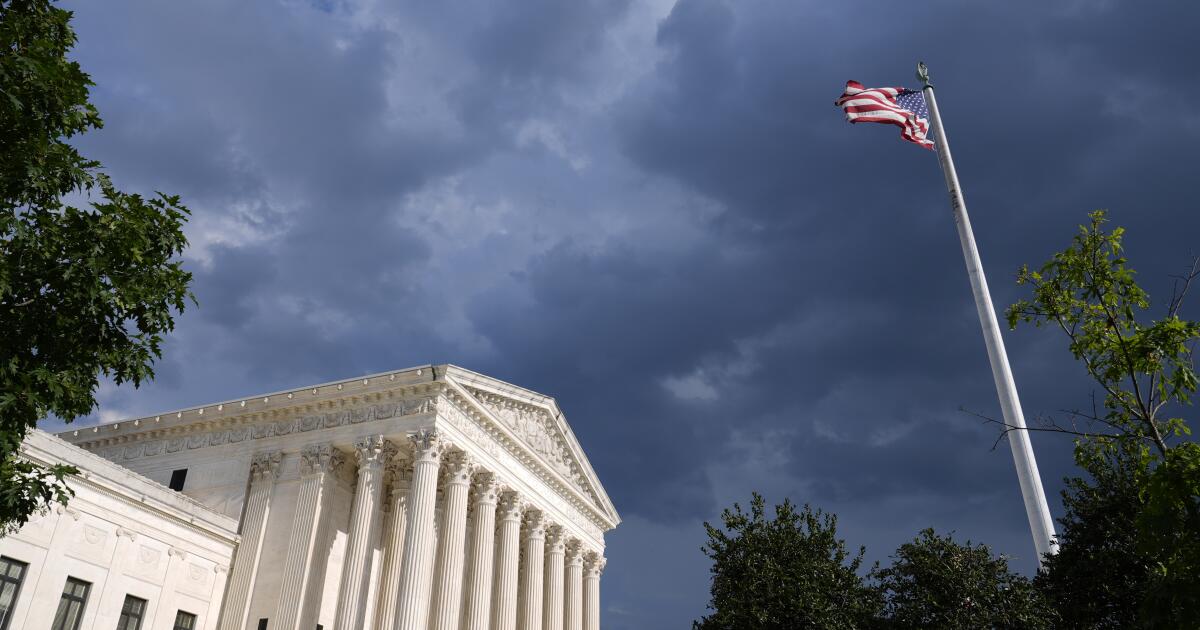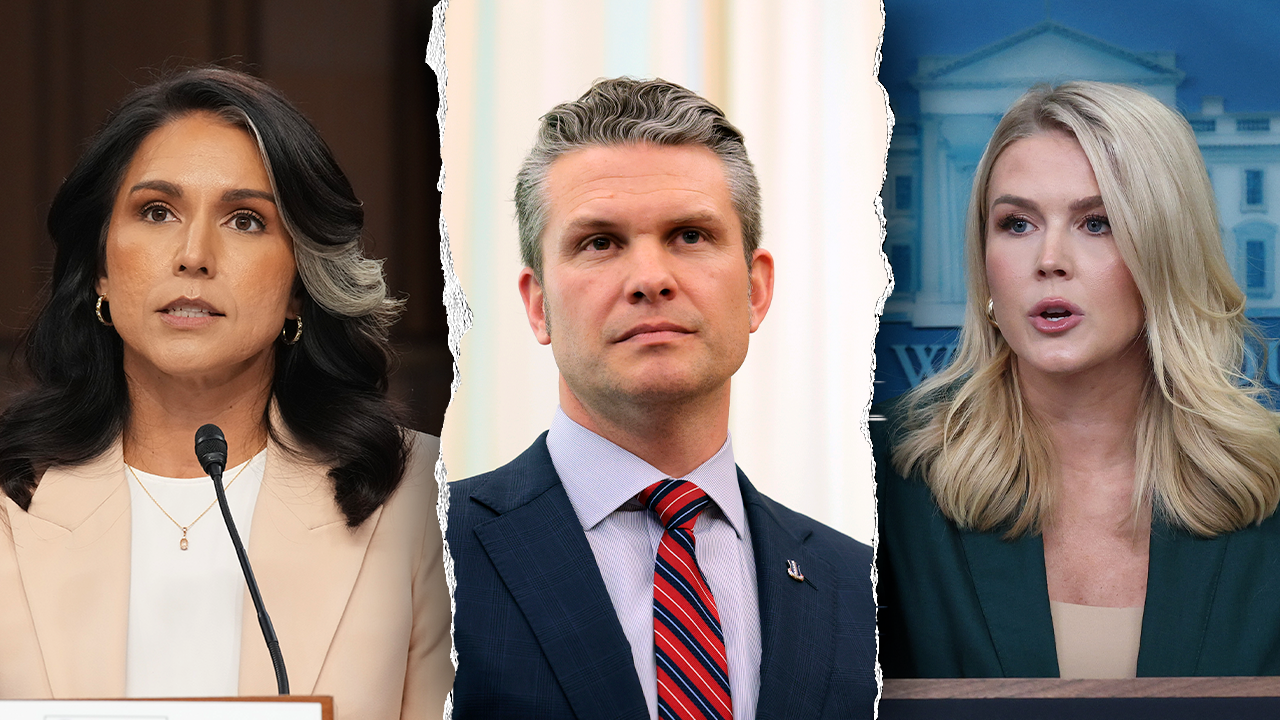Science
2024 Brought the World to a Dangerous Warming Threshold. Now What?

Source: Copernicus/ECMWF
Note: Temperature anomalies relative to 1850-1900 averages.
At the stroke of midnight on Dec. 31, Earth finished up its hottest year in recorded history, scientists said on Friday. The previous hottest year was 2023. And the next one will be upon us before long: By continuing to burn huge amounts of coal, oil and gas, humankind has all but guaranteed it.
The planet’s record-high average temperature last year reflected the weekslong, 104-degree-Fahrenheit spring heat waves that shuttered schools in Bangladesh and India. It reflected the effects of the bathtub-warm ocean waters that supercharged hurricanes in the Gulf of Mexico and cyclones in the Philippines. And it reflected the roasting summer and fall conditions that primed Los Angeles this week for the most destructive wildfires in its history.
“We are facing a very new climate and new challenges, challenges that our society is not prepared for,” said Carlo Buontempo, director of the Copernicus Climate Change Service, the European Union monitoring agency.
But even within this progression of warmer years and ever-intensifying risks to homes, communities and the environment, 2024 stood out in another unwelcome way. According to Copernicus, it was the first year in which global temperatures averaged more than 1.5 degrees Celsius, or 2.7 degrees Fahrenheit, above those the planet experienced at the start of the industrial age.
For the past decade, the world has sought to avoid crossing this dangerous threshold. Nations enshrined the goal in the 2015 Paris agreement to fight climate change. “Keep 1.5 alive” was the mantra at United Nations summits.
Yet here we are. Global temperatures will fluctuate somewhat, as they always do, which is why scientists often look at warming averaged over longer periods, not just a single year.
But even by that standard, staying below 1.5 degrees looks increasingly unattainable, according to researchers who have run the numbers. Globally, despite hundreds of billions of dollars invested in clean-energy technologies, carbon dioxide emissions hit a record in 2024 and show no signs of dropping.
One recent study published in the journal Nature concluded that the absolute best humanity can now hope for is around 1.6 degrees of warming. To achieve it, nations would need to start slashing emissions at a pace that would strain political, social and economic feasibility.
But what if we’d started earlier?
By spewing heat-trapping gases into the atmosphere, humankind has lifted global temperatures to record highs.
If nations had started reducing emissions in 2005, they could have made gradual cuts to limit warming to 1.5 degrees.
Starting in 2015, when the Paris agreement was adopted, would have required steeper cuts.
Starting today would require cuts so drastic as to appear essentially impossible.
“It was guaranteed we’d get to this point where the gap between reality and the trajectory we needed for 1.5 degrees was so big it was ridiculous,” said David Victor, a professor of public policy at the University of California, San Diego.
The question now is what, if anything, should replace 1.5 as a lodestar for nations’ climate aspirations.
“These top-level goals are at best a compass,” Dr. Victor said. “They’re a reminder that if we don’t do more, we’re in for significant climate impacts.”
The 1.5-degree threshold was never the difference between safety and ruin, between hope and despair. It was a number negotiated by governments trying to answer a big question: What’s the highest global temperature increase — and the associated level of dangers, whether heat waves or wildfires or melting glaciers — that our societies should strive to avoid?
The result, as codified in the Paris agreement, was that nations would aspire to hold warming to “well below” 2 degrees Celsius while “pursuing efforts” to limit it to 1.5 degrees.
Even at the time, some experts called the latter goal unrealistic, because it required such deep and rapid emissions cuts. Still, the United States, the European Union and other governments adopted it as a guidepost for climate policy.
Christoph Bertram, an associate research professor at the University of Maryland’s Center for Global Sustainability, said the urgency of the 1.5 target spurred companies of all kinds — automakers, cement manufacturers, electric utilities — to start thinking hard about what it would mean to zero out their emissions by midcentury. “I do think that has led to some serious action,” Dr. Bertram said.
But the high aspiration of the 1.5 target also exposed deep fault lines among nations.
China and India never backed the goal, since it required them to curb their use of coal, gas and oil at a pace they said would hamstring their development. Rich countries that were struggling to cut their own emissions began choking off funding in the developing world for fossil-fuel projects that were economically beneficial. Some low-income countries felt it was deeply unfair to ask them to sacrifice for the climate given that it was wealthy nations — and not them — that had produced most of the greenhouse gases now warming the world.
“The 1.5-degree target has created a lot of tension between rich and poor countries,” said Vijaya Ramachandran, director for energy and development at the Breakthrough Institute, an environmental research organization.
Costa Samaras, an environmental-engineering professor at Carnegie Mellon University, compared the warming goals to health officials’ guidelines on, say, cholesterol. “We don’t set health targets on what’s realistic or what’s possible,” Dr. Samaras said. “We say, ‘This is what’s good for you. This is how you’re going to not get sick.’”
“If we were going to say, ‘Well, 1.5 is likely out of the question, let’s put it to 1.75,’ it gives people a false sense of assurance that 1.5 was not that important,” said Dr. Samaras, who helped shape U.S. climate policy from 2021 to 2024 in the White House Office of Science and Technology Policy. “It’s hugely important.”
Scientists convened by the United Nations have concluded that restricting warming to 1.5 degrees instead of 2 would spare tens of millions of people from being exposed to life-threatening heat waves, water shortages and coastal flooding. It might mean the difference between a world that has coral reefs and Arctic sea ice in the summer, and one that doesn’t.
Each tiny increment of additional warming, whether it’s 1.6 degrees versus 1.5, or 1.7 versus 1.6, increases the risks. “Even if the world overshoots 1.5 degrees, and the chances of this happening are increasing every day, we must keep striving” to bring emissions to zero as soon as possible, said Inger Anderson, the executive director of the United Nations Environment Program.
Officially, the sun has not yet set on the 1.5 target. The Paris agreement remains in force, even as President-elect Donald J. Trump vows to withdraw the United States from it for a second time. At U.N. climate negotiations, talk of 1.5 has become more muted compared with years past. But it has hardly gone away.
“With appropriate measures, 1.5 Celsius is still achievable,” Cedric Schuster, the minister of natural resources and environment for the Pacific island nation of Samoa, said at last year’s summit in Azerbaijan. Countries should “rise to the occasion with new, highly ambitious” policies, he said.
To Dr. Victor of U.C. San Diego, it is strange but all too predictable that governments keep speaking this way about what appears to be an unachievable aim. “No major political leader who wants to be taken seriously on climate wants to stick their neck out and say, ‘1.5 degrees isn’t feasible. Let’s talk about more realistic goals,’” he said.
Still, the world will eventually need to have that discussion, Dr. Victor said. And it’s unclear how it will go.
“It could be constructive, where we start asking, ‘How much warming are we really in for? And how do we deal with that?’” he said. “Or it could look very toxic, with a bunch of political finger pointing.”
Methodology
The second chart shows pathways for reducing carbon emissions that would have a 66 percent chance of limiting global warming this century to 1.5 degrees Celsius above the preindustrial average.

Science
'We are still here, yet invisible.' Study finds that U.S. government has overestimated Native American life expectancy

Official U.S. records dramatically underestimate mortality and life expectancy disparities for Native Americans, according to a new, groundbreaking study published in the Journal of the American Medical Association. The research, led by the Boston University School of Public Health, provides compelling evidence of a profound discrepancy between actual and officially reported statistics on the health outcomes of American Indian and Alaska Native (AI/AN) populations in the U.S.
The study, novel in its approach, tracks mortality outcomes over time among self-identified AI/AN individuals in a nationally representative cohort known as the Mortality Disparities in American Communities. The researchers linked data from the U.S. Census Bureau’s 2008 American Community Survey with official death certificates from the Centers for Disease Control and Prevention’s National Vital Statistics System from 2008 through 2019, and found that the life expectancy of AI/AN populations was 6.5 years lower than the national average. They then compared this to data from the CDC’s WONDER database, and found that their numbers were nearly three times greater than the gap reported by the CDC.
Indeed, the study found that the life expectancy for AI/AN individuals was just 72.7 years, comparable to that of developing countries.
The researchers also uncovered widespread racial misclassification. The study reports that some 41% of AI/AN deaths were incorrectly classified in the CDC WONDER database, predominantly misrecorded as “White.” These systemic misclassifications drastically skewed official statistics, presenting AI/AN mortality rates as only 5% higher than the national average. When they adjusted the data to account for those misclassifications, the researchers found that the actual rate was 42% higher than initially reported.
The issue of racial misclassification “is not new for us at all,” said Nanette Star, director of policy and planning at the California Consortium for Urban Indian Health. The recent tendency for journalists and politicians to use umbrella terms like “Indigenous” rather than the more precise “American Indian and Alaska Native” can obscure the unique needs, histories and political identities of AI/AN communities, Star noted, and contribute to their erasure in both data and public discourse. “That is the word we use — erasure — and it really does result in that invisibility in our health statistics,” she said.
Issues related to racial misclassification in public records persist across the entire life course for AI/AN individuals, from birth to early childhood interventions to chronic disease and death. Star noted that in California, especially in urban regions like Los Angeles, Native individuals are frequently misidentified as Latino or multiracial, which profoundly distorts public health data and masks the extent of health disparities. “It really does mask the true scale of premature mortality and health disparities among our communities,” Star said.
Further, said Star, the lack of accurate data exacerbates health disparities. “It really is a public health and justice issue,” she said. “If you don’t have those numbers to support the targeted response, you don’t get the funding for these interventions or even preventative measures.”
According to U.S. Census data, California is home to the largest AI/AN population in the United States. That means it has a unique opportunity to lead the nation in addressing these systemic issues. With numerous federally and state-recognized tribes, as well as substantial urban AI/AN populations, California can prioritize collaborative and accurate public health data collection and reporting.
Star noted that current distortions are not always malicious but often stem from a lack of training. She suggested that California implement targeted training programs for those charged with recording this data, including funeral directors, coroners, medical doctors and law enforcement agents; allocate dedicated resources to improve the accuracy of racial classification on vital records; and strengthen partnerships with tribal leaders.
The study authors suggest similar approaches, and there are numerous examples of successful cases of Indigenous-led health partnerships seen across Canada and the U.S. that have helped reduce health disparities among AI/AN communities that could be used as a template.
These efforts would not only help to move toward rectifying historical inaccuracies, but also ensure that AI/AN communities receive equitable health resources and policy attention.
“When AI/AN people are misclassified in life and in death, it distorts public health data and drives inequities even deeper,” said Star. “Accurate data isn’t just about numbers — it’s about honoring lives, holding systems accountable and making sure our communities are seen and served.”
Science
Supreme Court upholds red-state laws that ban hormones for transgender teens

WASHINGTON — The Supreme Court ruled Wednesday that states may ban hormone treatments for transgender teens, rejecting the claim that such gender-based discrimination is unconstitutional.
In a 6-3 decision, the justices said states are generally free to decide on proper standards of medical care, particularly when health experts are divided.
Chief Justice John G. Roberts, writing for the court, said the state decides on medical regulations. “We leave questions regarding its policy to the people, their elected representatives, and the democratic process,” he said.
In dissent, Justice Sonia Sotomayor said the law “plainly discriminates on the basis of sex… By retreating from meaningful judicial review exactly where it matters most, the Court abandons transgender children and their families to political whims. In sadness, I dissent.” Justices Elena Kagan and Ketanji Brown Jackson agreed.
The ruling upholds laws in Tennessee and 23 other Republican-led states, all of them adopted in the past four years.
Tennessee lawmakers said the number of minors being diagnosed with gender dysphoria had “exploded” in recent years, leading to a “surge in unproven and risky medical interventions for these underage patients.”
California and other Democratic-led states do not prohibit doctors from prescribing puberty blockers or hormones for those under age 18 who are diagnosed with gender dysphoria.
While the court’s ruling in the Tennessee case should not directly affect California’s law, the Trump administration seeks to prevent the use of federal funds to pay for gender affirming care.
This could affect patients who rely on Medicaid and also restrict hospitals and other medical clinics from providing hormones and other medical treatments for minors.
Wednesday’s decision highlights the sharp turn in the past year on trans rights and “gender affirming” care.
Solicitor Gen. Elizabeth Prelogar, representing the Biden administration, had appealed to the Supreme Court in November 2023, and urged the justices to strike down the red-state laws.
She spoke of a broad consensus in favor of gender affirming care. It was unconstitutional, she argued, for states to ban “evidence-based treatments supported by the overwhelming consensus of the medical community.”
But Republican lawmakers voiced doubt about the long-term effect of these hormone treatments for adolescents.
Their skepticism was reinforced by the Cass Report from Britain, which concluded there were not long-term studies or reliable evidence in support of the treatments.
Trans-rights advocates argued the court should have deferred to parents and their doctors, not state lawmakers.
“The court today failed to do its job,” said Jennifer Levi, GLAD Law senior director of transgender and queer rights. “When the political system breaks down and legislatures bow to popular hostility, the judiciary must be the Constitution’s backbone. Instead, it chose to look away, abandoning both vulnerable children and the parents who love them.”
Lawyers for Lambda Legal and the ACLU called it “a heartbreaking ruling, making it more difficult for transgender youth to escape the danger and trauma of being denied their ability to live and thrive.”
“This is a sad day, and the implications will reverberate for years and across the country, but it does not shake our resolve to continue fighting,” said Sasha Buchert, a Lambda attorney.
Upon taking office in January, President Trump targeted transgender people without specifically mentioning them.
He said his administration would “recognize two sexes, male and female. These sexes are not changeable and are grounded in fundamental and incontrovertible reality.”
His administration later said its ban on gender affirming care for minors would extend to medical facilities receiving federal funds.
Science
Trump signs laws to kill California auto emission standards. California AG sues

President Trump signed legislation Thursday seeking to rescind California’s ambitious auto emission standards, including a landmark rule that eventually would have barred sales of new gas-only cars in California by 2035.
In a bill signing ceremony in the East Room of the White House, Trump slammed California’s planned zero-emission requirements for new car sales as “a disaster for our country.” During a meandering 50-minute speech, he argued that California’s regulations would raise car prices, hobble American car companies and place an incredible strain on electrical grids across the country.
“We officially rescue the U.S. auto industry from destruction by terminating the California electric vehicle mandate, once and for all,” Trump said to applause from a room filled with conservative legislators and business representatives.
“This horrible scheme would effectively abolish the internal combustion engine, which most people prefer,” Trump continued.
Trump boasted the legislation would “kill the California mandates forever,” declaring it would dash progressive plans to accelerate the adoption of electric vehicles.
“They can’t take us to court,” he said. “They can’t do any of the things they can do with the executive orders, and it’s permanent.”
But moments after he signed the three bills into law, California Atty. Gen. Rob Bonta led a coalition of 10 attorneys general in filing a lawsuit to challenge Trump’s laws, which had been approved by Congress in May. Bonta argued Congress unlawfully acted to upend California’s emission rules by invoking the Congressional Review Act, a law designed to allow legislators to rescind major federal rules adopted toward the end of a presidential administration. California and several congressional rules experts have said the Congressional Review Act could not be used to overturn federal waivers that enable California to enforce its auto emission standards.
“We’re doing this to ensure future generations inherit a livable planet with breathable air,” Bonta said at a news conference Thursday morning. “Meanwhile, the president’s divisive, partisan agenda is jeopardizing our lives, our economy and our environment. It’s reckless, it’s illegal, and because of it, we’ll be seeing the Trump administration in court again for the 26th time.”
By signing these three bills into law, Trump invalidated some of the most innovative regulations adopted by California environmental rule makers and undercut California’s long-standing authority to set more rigorous vehicle emission standards:
- The Advanced Clean Cars II rule would’ve required car companies to sell California dealerships an increasing percentage of new zero-emission or long-range hybrid vehicles, starting at 35% in 2026. The regulation would’ve culminated in a ban on the sale of new gas-only cars in California in 2035.
- Advanced Clean Trucks rule, which would’ve required a significant percentage of medium- and heavy-duty truck sales be zero-emission by 2035.
- The Heavy-Duty Engine and Vehicle Omnibus rule that established cleaner engine standards and required warranties for new heavy-duty vehicles.
In his second term, Trump has repeatedly attacked California’s ambitious auto emission rules, including the Advanced Clean Cars II regulation, which he has incorrectly described as an electric vehicle mandate. The rule does not block the sale of used gas-only cars or other zero-emission vehicles, like hydrogen-powered cars.
Because of its historically bad air quality, California is the only state that has been given permission to adopt auto emission standards that are stricter than federal standards. Many other Democratic states adhere to California’s auto emission rules, which has put pressure on auto companies to comply with the state’s progressive rules. That has irked a number of Republicans, including Trump, who believe there should be a unified slate of auto standards set by the federal government.
“It’s had us tied up in knots for years,” Trump said in his remarks Thursday morning. “They’d pass these crazy rules in California, and 17 states would go by them. The automakers didn’t know what to do because they’re really building cars for two countries.”
But California needs a federal waiver from the U.S. Environmental Protection Agency for its pace-setting auto emission standards to be enforceable.
Michael Regan, the U.S. EPA administrator during the Biden administration, granted several California waivers, including two in December 2024.
Prior to the Senate vote to overturn California auto emission rules, both
the Senate parliamentarian and Government Accountability Office had determined these federal waivers are not rules, they are administrative orders, not subject to the Congressional Review Act.
Despite those rulings, the Senate moved ahead with the vote and advanced the bill to Trump’s desk with a simple majority vote.
-

 Business1 week ago
Business1 week agoYale’s Endowment Selling Private Equity Stakes as Trump Targets Ivies
-

 Culture1 week ago
Culture1 week agoBarbara Holdridge, Whose Record Label Foretold Audiobooks, Dies at 95
-

 Science1 week ago
Science1 week agoIn Taxicab Geometry, Pi Equals 4 and Circles Aren’t Round
-

 News1 week ago
News1 week agoYosemite Bans Large Flags From El Capitan, Criminalizing Protests
-

 Culture1 week ago
Culture1 week agoA Murdered Journalist’s Unfinished Book About the Amazon Gets Completed and Published
-

 Culture1 week ago
Culture1 week agoHow Many Memorable Lines Can You Match Up With Their Novels?
-

 Business1 week ago
Business1 week agoWaymo halts service in downtown Los Angeles amid ICE protests
-

 Politics1 week ago
Politics1 week agoFox News Politics Newsletter: Hillary ‘Can’t Handle the Ratio'



















